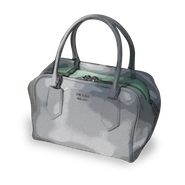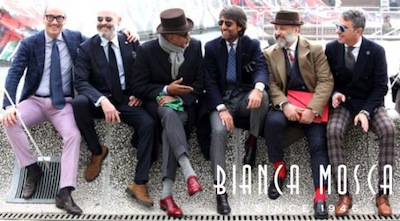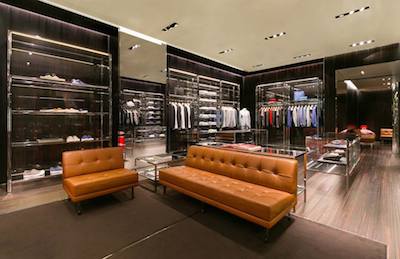 Prada Inside handbag
Prada Inside handbag
The leather goods market is expected to reach revenues of $94.7 billion by 2020, according to a new report by Allied Market Research.
Leather luggage and goods are also being propelled by a compound annual growth rate (CAGR) of 5 percent during the five-year period between 2015 and 2020. The “World Leather Luggage and Goods Market Opportunities and Forecasts 2014-2020” report attributes this growth to factors such as an increase of per capita income, a higher tourism rate and evolving fashion trends.
Allied Market Research’s report examines the leather luggage and goods market in regions such as North America, Europe, Asia Pacific and LAMEA (Latin America, Middle East and Africa). Key brands analyzed in the report include Coach, Prada, Samsonite, Louis Vuitton, Hermès, Kering, Delsey, Christian Dior, Tumi and VIP Industries.
Gotta hand[bag] it to you
In 2014, the leather luggage and goods category saw the most growth in the Asia Pacific region followed by Europe and North America. Category interest, especially for new and trendy designs, in Asia Pacific is marked by a rising middle-class demographic alongside an increase in disposable income in nations such as India and China.
With a higher amount of disposable income, consumers are also more likely to have the means to travel more frequently and to attractive destinations. This has caused the travel bag to become the fastest growing segment within the leather luggage category, with a CAGR of 6.9 percent in the forecast period of 2015-2020.
 Gucci handbags
The handbag segment of the leather goods market owes its growth to the increasing number of women in the workforce. This growth is also connected to the economic independence of these women, which has led to purchasing high-end branded leather handbags.
Overall, the female demographic is the largest contributor the category accounting for 61.6 percent of the market in 2014. Comparably, the male demographic is witnessing a period of growth as more men opt for stylish and designer leather bags, wallets and footwear.
As a sector, luxury men’s handbags are expected to rise to $10 billion by 2020 with nearly 9 million units sold globally (see story).
Gucci handbags
The handbag segment of the leather goods market owes its growth to the increasing number of women in the workforce. This growth is also connected to the economic independence of these women, which has led to purchasing high-end branded leather handbags.
Overall, the female demographic is the largest contributor the category accounting for 61.6 percent of the market in 2014. Comparably, the male demographic is witnessing a period of growth as more men opt for stylish and designer leather bags, wallets and footwear.
As a sector, luxury men’s handbags are expected to rise to $10 billion by 2020 with nearly 9 million units sold globally (see story).
 Bianco Mosca men's leather goods advertisement
Retailers have also benefited from the increased interest in the category. Many leather goods brands have established bricks-and-mortar storefronts in untapped regions to expand their presence.
For instance, Italian apparel and accessories brand Prada opened its first boutique in Jakarta, Indonesia. The store offers a leather bags and accessories for both men and women, as brands seek to offer a wide assortment of leather products under one roof (see story).
Bianco Mosca men's leather goods advertisement
Retailers have also benefited from the increased interest in the category. Many leather goods brands have established bricks-and-mortar storefronts in untapped regions to expand their presence.
For instance, Italian apparel and accessories brand Prada opened its first boutique in Jakarta, Indonesia. The store offers a leather bags and accessories for both men and women, as brands seek to offer a wide assortment of leather products under one roof (see story).
 Prada's Jakarta, Indonesia boutique
The online retail space is anticipated to keep pace with in-store leather goods sales with a CAGR of 26 percent during the five-year forecast period. Social media is mainly responsible, as the convenience of the platform and the increased use of digital devices for shopping has fostered online sales growth.
Purse string strategies
Allied Market Research also noted that expansion and acquisitions are key growth strategies as it allows brands to establish a market foothold and expand their consumer base.
One such acquisition that strengthened both parties involved was Coach’s purchase of leading luxury footwear brand Stuart Weitzman in 2015 for a reported $574 million. Coach purchased Stuart Weitzman from Sycamore Partners, and the acquisition complements the accessories maker’s leadership role in the sector. With the designer footwear label under its umbrella, Coach’s own brand will strengthen and grow (see story).
Also, configuring retail strategies to account for leather goods trends can help brands capitalize on interest for the category.
For instance, a primary selling point for U.S. label Michael Kors within the department store channel is the brand’s handbags. While not the only brand affected by a slowing retail channel, the amount of handbags sold by department stores may have had an adverse affect on the brand’s earnings.
While Michael Kors handbags have maintained popularity, the label has seen a trend among millennials that have resulted in the purchasing of smaller handbags. Due to the smaller size, the market retail price is lower and the sales of handbags priced at $350 and above are fewer (see story).
Prada's Jakarta, Indonesia boutique
The online retail space is anticipated to keep pace with in-store leather goods sales with a CAGR of 26 percent during the five-year forecast period. Social media is mainly responsible, as the convenience of the platform and the increased use of digital devices for shopping has fostered online sales growth.
Purse string strategies
Allied Market Research also noted that expansion and acquisitions are key growth strategies as it allows brands to establish a market foothold and expand their consumer base.
One such acquisition that strengthened both parties involved was Coach’s purchase of leading luxury footwear brand Stuart Weitzman in 2015 for a reported $574 million. Coach purchased Stuart Weitzman from Sycamore Partners, and the acquisition complements the accessories maker’s leadership role in the sector. With the designer footwear label under its umbrella, Coach’s own brand will strengthen and grow (see story).
Also, configuring retail strategies to account for leather goods trends can help brands capitalize on interest for the category.
For instance, a primary selling point for U.S. label Michael Kors within the department store channel is the brand’s handbags. While not the only brand affected by a slowing retail channel, the amount of handbags sold by department stores may have had an adverse affect on the brand’s earnings.
While Michael Kors handbags have maintained popularity, the label has seen a trend among millennials that have resulted in the purchasing of smaller handbags. Due to the smaller size, the market retail price is lower and the sales of handbags priced at $350 and above are fewer (see story).
